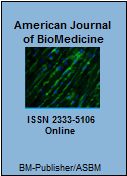
![]()
We present a boy of 16 years diagnosed as an isolated bilateral neuroblastoma in an ectopic adrenal gland, an unusual cause of peritoneal ascites. He was complaining of severe abdominal pain over four months prior, with no other related symptoms. On physical examination, his weight and height were below expected for age, characterized by abdominal distension without hepatomegaly nor splenomegaly. There was a shifting dullness on his abdomen. No abdominal mass was palpable. Laboratory findings demonstrated the following: normochromic normocytic anemia, hemoglobin concentration of 9 g/dL, hematocrit concentration of 28.2%, leukocytes within the normal range, and platelet count within the normal range, total serum protein level of 6.7 g/dL, albumin level of 3.9 g/dL, an elevated C-reactive protein level of 28 mg/L (normal range <5 mm/h), and an elevated erythrocyte sedimentation rate of 73 mm/h. Both the serum lactate dehydrogenase and 24-hour urinary vanillylmandelic acid levels were elevated (2136 IU/L [normal range <480 mg/L] and 168.3 mg/day [normal range 0.8–6.4 mg/24 h], respectively). The patient's alpha-fetoprotein level was within the normal range. He underwent an abdominopelvic computed tomography scan with contrast medium that demonstrated a small amount of peritoneal effusion, cirrhotic liver, splenomegaly, mild retraction and calcification of gallbladder, and small lymph nodes in the peripancreatic and hepatic pedicle areas. Exploratory laparoscopy was performed owing to his unexplained ascites. There was mild peritoneal ascites approximately 50 mL in volume; volume replacement was performed with peritoneovenous shunt surgery. A totally retroperitoneally placed bilateral suprarenal rounded mass was also observed; some nodules in the liver and perihilar lymph node in the hepatoduodenal ligament and behind the common bile duct were considered metastases. A pheochromocytoma or a neuroblastoma was suggested.
Keywords: Neuroblastoma; Ascites; Pleural effusion
Copyright © 2020 by The American Society for BioMedicine and BM-Publisher, Inc.
- Challagundla KB, Wise PM, Neviani P, et al. Exosome-mediated transfer of microRNAs within the tumor microenvironment and neuroblastoma resistance to chemotherapy. J Natl Cancer Inst 2015;107(7). [Medline]
- Shimada H, Chatten J, Newton WA Jr, et al. Histopathologic prognostic factors in neuroblastic tumors: definition of subtypes of ganglioneuroblastoma and an age-linked classification of neuroblastomas. J Natl Cancer Inst 1984;73(2):405-16. [Medline]
- Cohn SL, Pearson AD, London WB, et al. The International Neuroblastoma Risk Group (INRG) classification system: an INRG Task Force report. J Clin Oncol;2009:27(2):289-97. [Medline] [Full Text].
- Stiller CA, Parkin DM. International Variations in the incidence of neuroblastoma. International Journal of Cancer 1992;52:538-543.
- George RE, Li S, Medeiros-Nancarrow C, et al. High-risk neuroblastoma treated with tandem autologous peripheral-blood stem cell-supported transplantation: long-term survival update. J Clin Oncol 2006;24(18):2891-6. [Medline]
- Schleiermacher G, Javanmardi N, Bernard V, et al. Emergence of New ALK Mutations at Relapse of Neuroblastoma. J Clin Oncol 2014;32(25):2727-34. [Medline]
- Tang XX, Evans AE, Zhao H, et al. High-level expression of EPHB6, EFNB2, and EFNB3 is associated with low tumor stage and high TrkA expression in human neuroblastomas. Clin Cancer Res 1999;5(6):1491-6. [Medline]
- Turkel SB, Itabashi HH. The natural history of neuroblastic cells in the fetal adrenal gland. Am J Pathol 1974;76(2):225-44. [Medline]
- Wang Q, Diskin S, Rappaport E, et al. Integrative genomics identifies distinct molecular classes of neuroblastoma and shows that multiple genes are targeted by regional alterations in DNA copy number. Cancer Res 2006;66(12):6050-62. [Medline]
- White PS, Maris JM, Sulman EP, et al. Molecular analysis of the region of distal 1p commonly deleted in neuroblastoma. Eur J Cancer 1997;(12):1957-61. [Medline]
- Woods WG, Tuchman M, Robison LL, et al. A population-based study of the usefulness of screening for neuroblastoma. Lancet 1996;348(9043):1682-7. [Medline]
- Monclair T, Brodeur GM, Ambros PF, et al. The International Neuroblastoma Risk Group (INRG) staging system: an INRG Task Force report. J Clin Oncol. 2009;27(2):298-303. [Medline][Full Text]
- London WB, Castleberry RP, Matthay KK, et al. Evidence for an age cutoff greater than 365 days for neuroblastoma risk group stratification in the Children's Oncology Group. J Clin Oncol 2005;23(27):6459-65. [Medline]
Who Can Become a Reviewer?
Any expert in the article's research field can become a reviewer with American Journal of Biomedicine. Editors might ask you to look at a specific aspect of an article,...
Thank you for visiting American Journal of BioMedicine. * = Required fields
How to cite this article
Feng XS, Takagi HX, Feng JR. An unusual cause of peritoneal ascitis: An isolated bilateral neuroblastoma. American Journal of BioMedicine 2020;8(4):225-234.
Case report outline
1. Abstract
2. Keywords
3. Case presentation
4. Discussion
5. References

